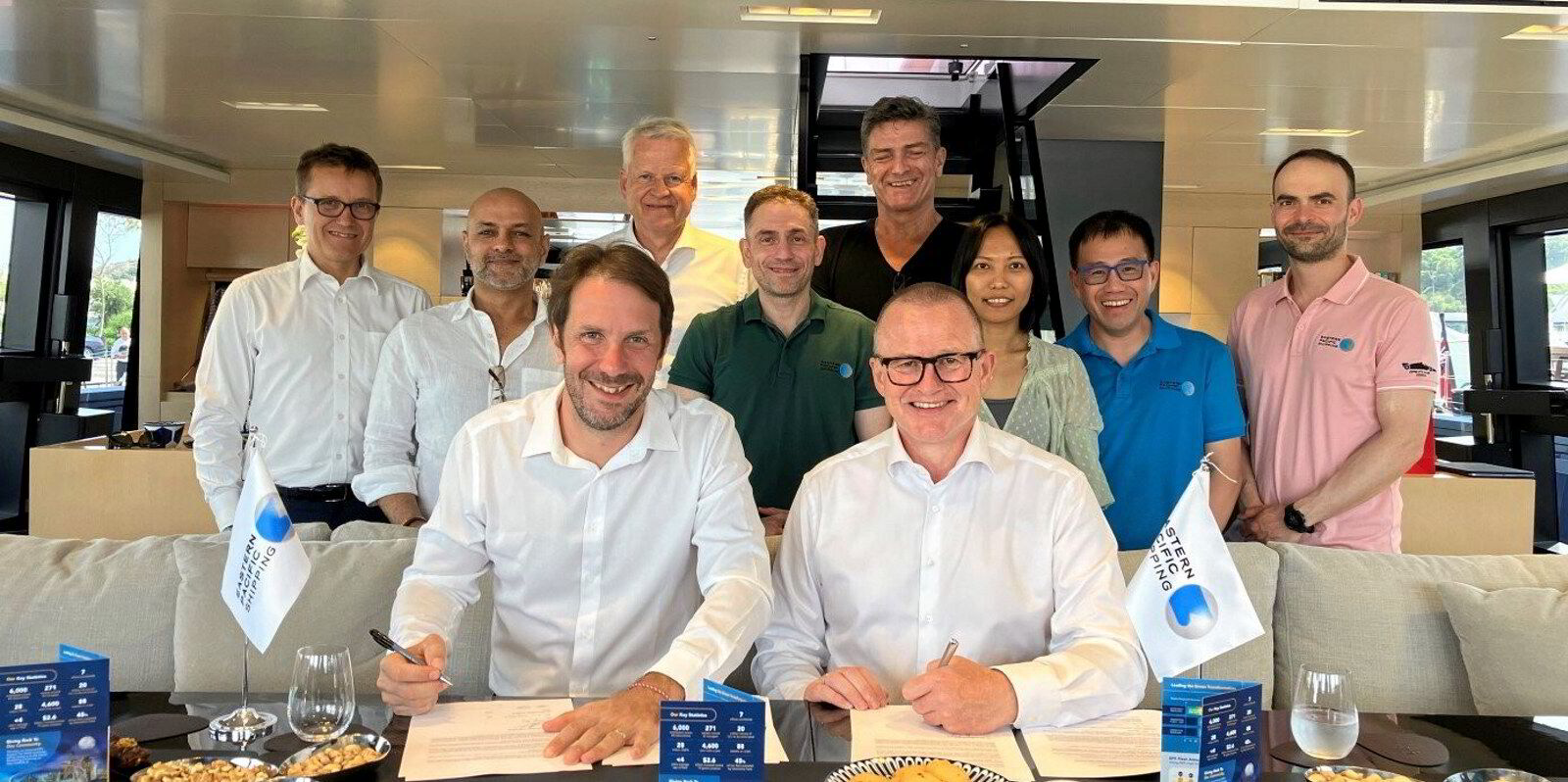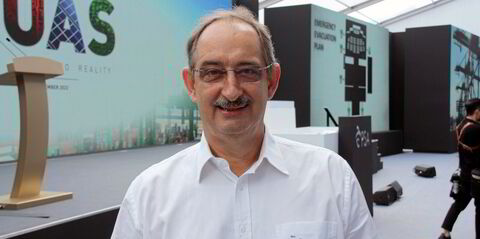South Korean shipbuilder Samsung Heavy Industries has teamed up with compatriot class society KR (Korean Register) on the development of an ultra-large ammonia carrier (ULAC).
KR said it had granted approval in principle for a 150,000-cbm ULAC developed by SHI.
The pair said the ULAC is designed to transport large quantities of ammonia while using ammonia as a propulsion fuel, ensuring zero carbon emissions during operation.
SHI took on the conceptual design of the ULAC’s fuel system, looking at the characteristics of ammonia, including fuel supply, ventilation, and gas monitoring systems, and ensured the basic design of the large tanks met the regulatory requirements.
KR verified the safety of the ammonia fuel system, the suitability of the tank arrangement, and reviewed domestic and international regulations on design compliance.
The Korean class society also signed a memorandum of understanding with SHI for the development of 9,300-teu ammonia-fuelled container ships.
SHI executive vice president Jang Haeki said: “We anticipate high market demand for ultra-large ammonia carriers to accommodate the expected increase in cargo volumes.”
Several companies are known to be working on the development of ULACs.
These include Maria Angelicoussis-led Maran Gas Maritime which has been working with US energy major Chevron on a joint development project to build ULACs.
To date, newbuilding orders have been focused on very large ammonia carriers for vessels of about 93,000 cbm.
But future long-haul trades from the US and Middle East to Asia are expected to make a commercial case for larger vessels.
Ammonia has proved a hot topic during Posidonia week with a steady stream of announcements on AiPs for ammonia-fuelled vessel designs.
Today in Athens, DNV awarded Hyundai Mipo Dockyard an AiP for the design of a new ammonia dual-fuel feeder container ship.
It said the AiP is the result of a collaborative effort between HMD, WinGD, HD Hyundai Heavy Industries and Kangrim Heavy Industries.
Lloyd’s Register and Guangzhou Shipyard International inked a joint development project for the design of what the two said will be the world’s largest VLAC with a capacity of 100,000 cbm. The vessel will feature an independent IMO type B tank.
Class society ABS also handed over an AiP to SHI for its design of a midship section and cargo tank for a 96,000-cbm VLAC.
ABS senior vice president of global business development Vassilios Kroustallis said: “The utilisation of ammonia is anticipated to increase as industries move towards more sustainable energy sources, and shipping will have a critical role to play.”





